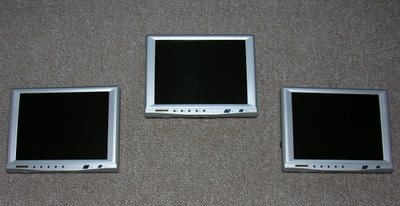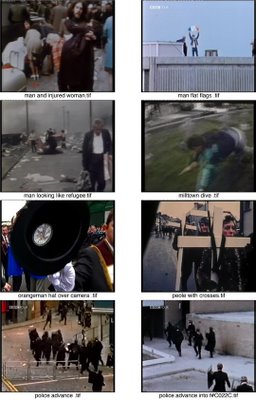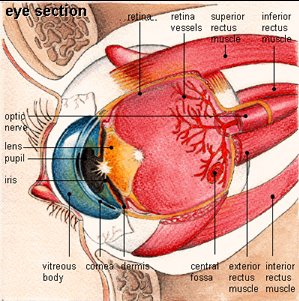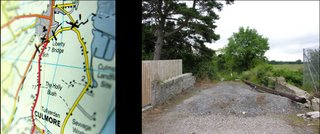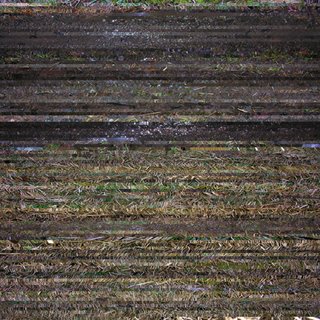Stephen Jackson
MA Unit 3 Paper
Introduction
Within this paper, I will start by stating the current position of my MA project and give a description of its final presentation for the summer MA show. I will then highlight areas of research, primary and secondary, ending with three examples of artists/artist projects that are of particular relevance to my work. I will finish by considering the future development of my project beyond this course.
Current position of project
I am currently trying to gain permission/access to work with footage from Northern Ireland film and video archives. Using footage from traumatic events that have become lodged in the memories of its population, I propose to remove actions from their original context, extracting human figures from their geographical position and re-animating them within more neutral digital spaces, allowing figures from different times and spaces to perform a kind of melancholic dance. The extracted figures will be thrown out of focus just enough to avoid categorization by the viewer, suggesting a more universal experience of people caught up within conflict and changing territories, touching on their dislocation, loss, willpower, strength and similarity of circumstance. I want the figures to convey a sense of searching for understanding.
I also think of this blurring as symbolising a beginning of forgetting, of fading memory. I want to consider this idea of loss of memory as new beginning, specifically in relation to the notion put forward by Susan Sontag In her book “Regarding The Pain Of Others”. Sontag wrote:
“The belief that remembering is an ethical act is deep in our natures as humans. Heartlessness and amnesia seem to go together. But history gives contradictory signals about the value of remembering in the much longer span of collective history. There is simply too much injustice in the world. And too much remembering (of ancient grievances: Serbs, Irish) embitters. To make peace is to forget. To reconcile, it is necessary that memory be faulty and limited”.
I propose to present these animated images together with aerial video footage captured from a kite mounted video camera. These images will show a birds eye view of the landscape and populations beneath from positions within the North of Ireland, of personal and geographical significance. I have built a large Rokkau kite and a lightweight self-leveling video camera harness to enable me to shoot this aerial video. I will be using this kite setup a lot from Xmas to Easter to collect footage from the air above the Irish border and around the coast. Ultimately the kite footage may develop into a separate piece of work because of its potential incompatibility with the animated figures imagery.
I will have a soundtrack also constructed from archived material, newly recorded material (mainly voice and often abstracted) and computer generated, abstract soundscapes. The sound will act as a kind of lens with an ebb and flow of focus, adding focus at points, hinting at possible narratives, then receding back towards a more abstract soundscape, drifting, giving the viewer only brief lucid moments. I see this work conveying a sense of time slowing - an opening up of space, of being meditative, melancholic.
Final presentation for MA show
At present, I envisage my final show being an installation comprising five LCD screens arranged to create five edges of a hexagon with 40-50cm spaces between edges of adjacent screens, the sixth side being the entrance to the installation. The screens will face inwards and will display a combination of aerial footage of the land and my extracted figure footage. There will be one directional speaker suspended from the ceiling above each screen giving a screen specific whispering soundtrack, and a single speaker above the entire installation providing a more ambient soundscape.
Areas of research
From growing up in Northern Ireland, I have always been interested in and acutely aware of political and personal landscape and territory, and of the fixed, polarised positions people tend to publicly adopt within areas of conflict. I am interested in how people position themselves and cope, within geographical areas affected by conflict, and within their own emotional landscapes.
Primary research
Last summer, I spent four days traveling along the Irish border on a moped. My goal was to visit every point where the border intersects a road, no small task given the sheer number of B and C class roads in the North of Ireland. These border lands were places to avoid when I was young. Regular reports on BBC Northern Ireland spoke of violence among these areas, of hatred between neighbors with differing beliefs, of murders. Border crossing points were heavily fortified by the British army until the peace agreements of the late 1990’s. The complete visual decommissioning of these border checkpoints was part of the peace agreements. I had a desire to navigate these foreboding lands of my youth, to let the landscape wash over me, to become immersed within it. What I found was the changing rhythm of, what for me, was a compelling landscape. I was also nearly always aware of its darker underside, not so visible in these times of “peace”, but still tangible.
This initial visit was meant to be mostly about the experience and research, but as I traveled and made photographs I became interested in the photographic typology of roadsides that was emerging. This has become a new strand of current work that is running parallel to my main MA project, each strand informing the other from very different perspectives. I am not sure at present what bearing this will have on my final show.
Secondary research
For my Pgdp essay, I researched into the relationship between Nations and States, and of the nature of borders and borderlands, concentrating mainly on Europe. As part of this essay, I researched personal territories within the Irish border area, territories that are not fixed, which can transcend geographical and/or state borders, which are constantly changing and evolving. In terms of the border dwellers perceptions, the border wasn’t perceived as a single line, but rather: a continuum in everyday life experience that might constantly be negotiated or avoided for a variety of ordinary motives, like shopping, profit from smuggling, work, family.
There are two extremely valuable websites that I regularly visit for research. The first is CAIN - Conflict Archive on the Internet. This provides historical background to present day information on the Northern Ireland conflict. I have found it particularly useful in finding dates of significant meaningful events from the troubles and their exact location. When I use these dates in conjunction with the BBC’s “On This Day” search facility, I can access and research news footage of events that I hope to be able to get very small sections of unedited footage from.
The following are three key artists/arts projects out of the many that I’ve found inspiring and influential:
Willie Doherty
The artist that I find most interesting in relation to my project is Willie Doherty. Doherty was born and still lives close to Londonderry in Northern Ireland and has been making work since 1980. His work comprises both photography and video and is very rooted in his hometown of Derry and the divide that runs through the city and the province of Northern Ireland. His work often possesses an uneasy tension. Doherty cites his witnessing of “Bloody Sunday” at the age of 12 as being highly influential. This occasion when unarmed Catholic civil rights protesters where killed by British paratroopers was subsequently denied and suppressed through the media and by the British Government (Public enquiry started 2002, report pending). From this early age, Doherty was aware of how situations could be twisted by those in power and the media. His work has subsequently played with the notion of dual or multiple readings of events and is almost exclusively made in and around Derry and the adjacent border areas. He is careful not to express partisan opinions in his work, but rather addresses the more universal issues confronting people within similar divided lands.
Borderlands: Contemporary Photography From The Baltic States
Borderlands was an exhibition held in Glasgow in 1993 for “Fotofeis” the Scottish international photography festival, which choose “Views from the edge” as its title and theme. The exhibition comprised of 17 artists work from the newly independent Baltic States (1991). Martha McCulloch referred to the exhibition in her forward to the catalogue “borderlands” as “providing parallels between the struggle of these three small countries to establish their own non-Soviet identities within the context of both the Baltic States and Europe, and that of Scotland’s attempt to assert itself within Britain and Europe. Spiritually independent nations dominated by their relationship with a larger neighbour”.
It was seen as important, to allow the show to have three curators, one from each of the three participating Baltic States, to provide an internal view point. This approach was to avoid having a western curator parachuting into these countries and projecting their own thoughts and agenda through the artists work. What it allowed was the similarities, differences and breadth of approaches to “provide tangible evidence of the erroneous, Western, perception of “The Baltic States” as a single homogeneous unit”.
I find the approach adopted here interesting and highly relevant in regards to travelling into other people’s domains and attempting to make meaningful work within foreign cultures. Within the next couple of years I intend to continue my current project and travel along the land locked border of the European Union making images. This extension of my project will take in the countries of Estonia, Lithuania and Latvia as well as many others.
Heath Bunting
On the 1st Oct 2002 the Tate Modern held a evening seminar where the artist Heath Bunting talked about his project “BordedXing Guide” The archive reads: “Heath Bunting's BorderXing Guide website primarily consists of documentation of walks (he has completed) that traverse national boundaries, without interruption from customs, immigration, or border police. The work comments on the way in which movement between borders is restricted by governments and associated bureaucracies.” Bunting is also concerned with the transformative nature of borders, the way they can turn the skilled worker into “Illegal Aliens”, negating their wealth of skills and life experience. He argues that border guards aren’t checking your identity so much as your “user profile”, your usefulness to the country being entered and he goes on to state that the problem with user profiles is that someone else chooses the criteria. Users of his website need to ask Bunting for permission to enter before they can access the documented unhindered European border crossings that he has successfully undertaken (mostly without the security of a passport), his resource for the would be “illegal” frontier traveler.
Future development
My intention is to develop these strands of work further after the summer MA show. I have already started to plan a trip around the frontier of the European Union, where I will develop the form of travelling on a motorbike with portable media lab that I started last summer around the border of Northern Ireland. Since early in my MA, my intention has been to use the familiar territory of the Irish border to develop research and a solid ideological heart within my work, enabling me to then make informed work from travels through less familiar borderlands.
MA Project Bibliography
BOOKS:
Anderson, A. Bort, E.1998.The Frontiers Of Europe. London & Washington:Pinter.
BARTHOLOMEW, J., 1957. Bartholomew’s Advanced Atlas Of Modern Geography.
Black, J.1997. Maps And Politics. London: Reaktion Books
BROUWER , J., MULDER, A., CHARLTON, S., 2003. Information Is Alive (Art and Theory on Archiving and Retrieving Data). Netherlands: V2_Publishing/NAI Publishers.
Donnan, H. Wilson, T. 1999. Borders. Frontiers of Identity. Oxford & New York: Berg.
England, J. 2001. The Map is Not the Territory. London: England & Co.
Gupta, S. ed, 1993.Disrupted Borders. London: Rivers Oram Press.
HARRIES, D. ed, 2002. The New Media Book. 2ND edition. London: The British Film Institute Publishing.
King, R. ed,1993. The New Geography Of European Migrations. London and New York: Belhaven press.
Konstantin Symmons-Symonolewicz, 1985. The Concept of Nationhood: towards a theoretical clarification, p221. Canadian Review of Studies in Nationalism 12(Fall):215-22)
MANOVICH, L., 2OO1.The Language Of New Media. Cambridge,
Massachusetts/London, England: The MIT Press.
MILLER, D., ed, 1998. Rethinking Northern Ireland (culture, Ideology and Colonialism). England: Addison Wesley Longman Limited.
Morley, D. 2000. Home Territories, Media, Mobility and Identity. London & New York: Routledge
Ordnance Survey of Northern Ireland, 2003. Discovery Series Maps, Sheets 4, 5, 9, 14, 15, 20, 21, 29. Belfast, Nortern Ireland: Ordnance Survey of Northern Ireland. *
Ordnance Survey Ireland, 1999. Discovery Series Maps, Sheets 1, 2, 3, 6 10, 11. Dublin, Ireland: Ordnance Survey Ireland. *
McLUHAN, M., 1964. Understanding Media. United Kingdom: Routledge and Kegan Paul.
PAX, S.,2003. The Bagdad Blog. London: Atlantic Books (on behalf of Guardian Newspapers Ltd).
Todd, J. Muldoon, O. Trew, K. McLaughan, K. Rougier, N. Bottos, L. 2005. Borders, States and Nations. Contested Boundaries and National Identities in the Irish Border Area. Dublin: Geary Institute.
White, G. 2004. Nation, State and Identity. Lanham, Boulder, New York, Toronto, Oxford: Rowman & Littlefield Publishers.
Wilson, T. Donnan, H. ed, 1998.Border Identities. Cambridge:Cambridge University press.
Edinburgh, Great Britain: The Geographical Institute.
* (these maps cover the all of the Ulster coastline)
WEB SITES:
MELAUGH, M.,2004. Conflict Archive On The Internet (Northern Ireland) [online] Available from: http://cain.ulst.ac.uk/index.html [Accessed 20th September 2004]
INDYMEDIA. 2004. Indymedia UK is a network of individuals, independent and alternative media activists and organisations, offering grassroots, non-corporate, non-commercial coverage of important social and political issues. [online] Available at: http://www.indymedia.org.uk/en/ [Accessed 20th September 2004]
CHRISAFIS, C., 2004. Racist war of the loyalist street gangs. [online] Guardian Unlimited. Available from: http://www.guardian.co.uk/race/story/0,11374,1120113,00.html [Accessed 20th September 2004]
CENTRAL SURVEY UNIT. 2004. leading social survey research organisation in Northern Ireland. Part of the Northern Ireland Statistics and Research Agency (NISRA) [online] Available at: http://www.csu.nisra.gov.uk/ [Accessed 20th September 2004]
MOFFATT, J., 1996-98. UK Military Pollution. [online]. Manxman Review, Isle Of Man. Available from: http://www.manxman.co.im/cleague/archive/modenv5.html [Accessed 20th September 2004]
WEINTRAUB, R., 2002. NASA (National Aeronautics And Space Administration). Looking at earth:Satallite Imagery. Available from: http://www.nasa.gov/vision/earth/lookingatearth/index.html [Accessed 20th September 2004]
GLOBALSTAR. 2004. Product coverage information [online]. Available from:
http://www.globalstar.com/view_page.jsp?page=coverage [Accessed 20th September 2004]
ORDNANCE SURVEY OF NORTHERN IRELAND.2004. Ordnance survey services for Northern Ireland [online]. Available from: http://www.osni.gov.uk/homepageX.htm [Accessed 20th September 2004]
MHUR, Dr. K./McKAY, Dr, P. 200? Northern Ireland Place Name Project, Information about the project and its resources [online]. Queens University Belfast. Available from:







